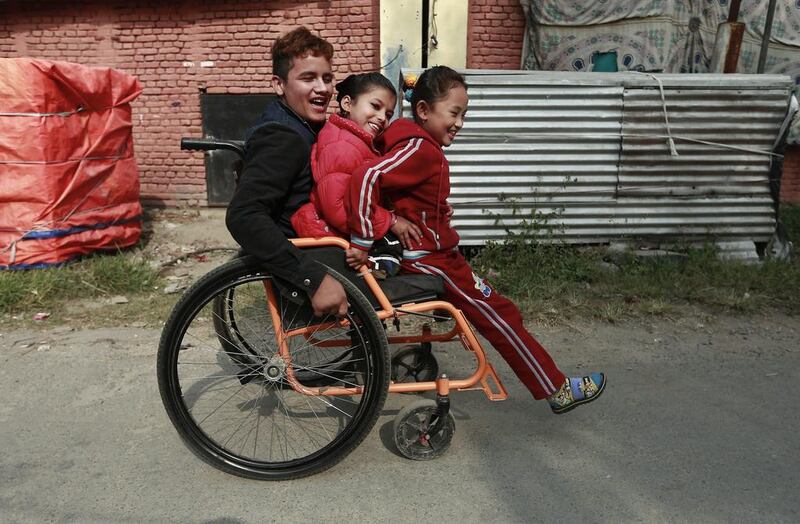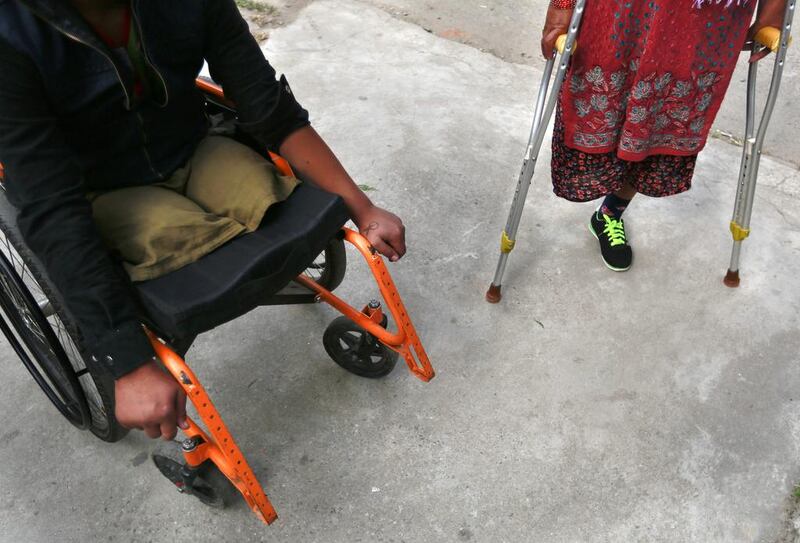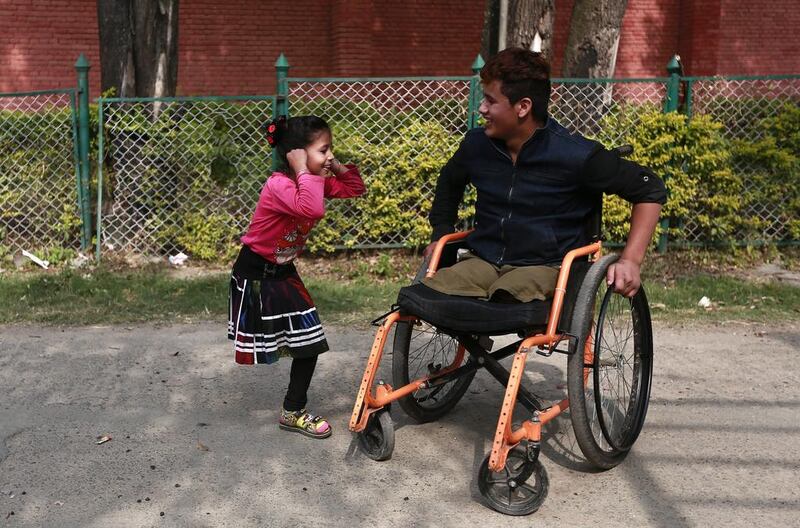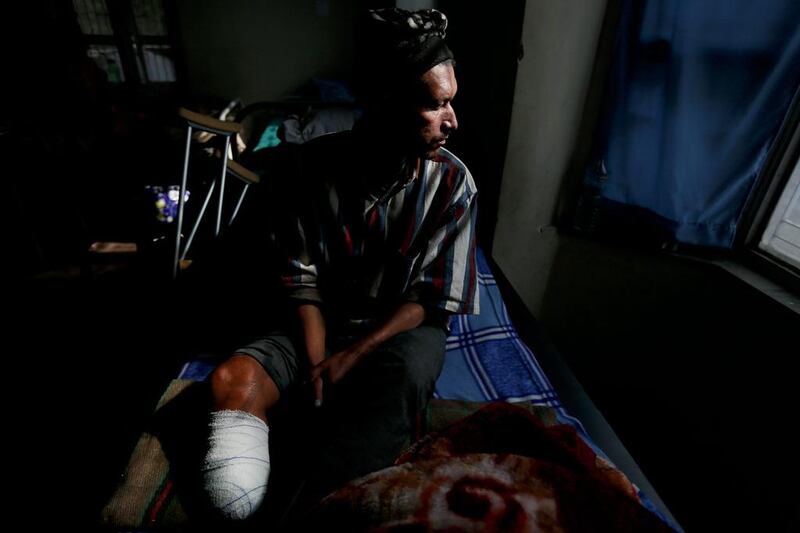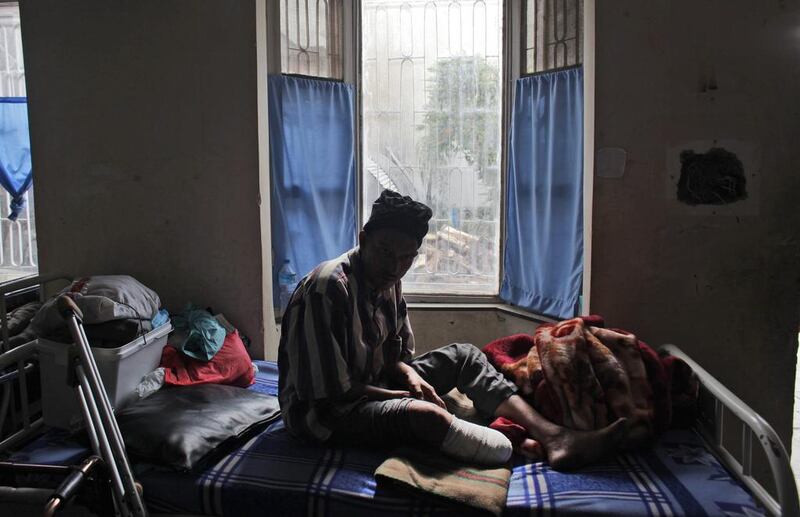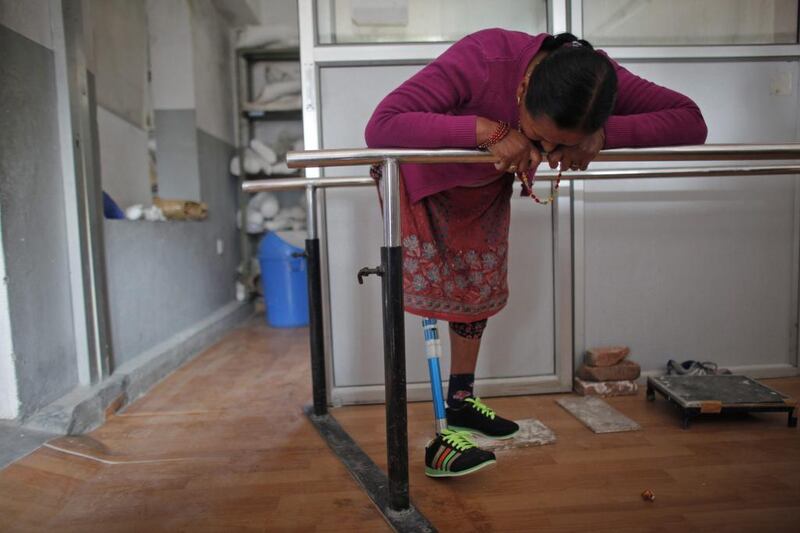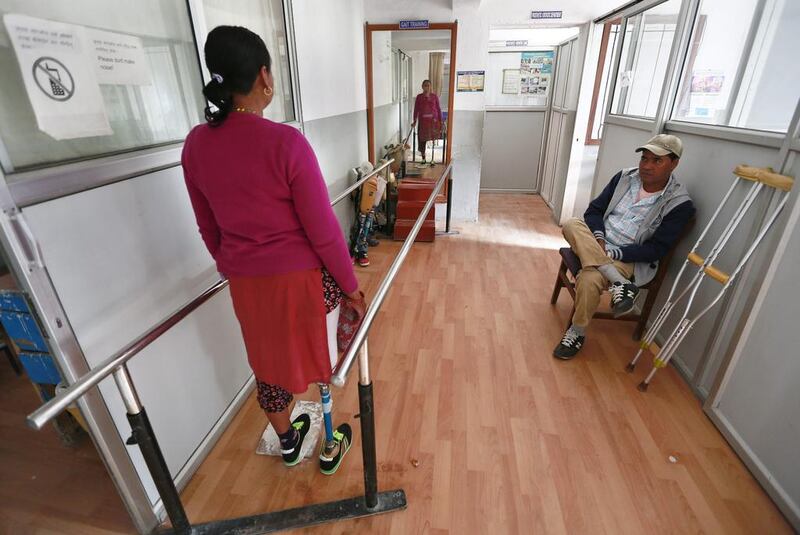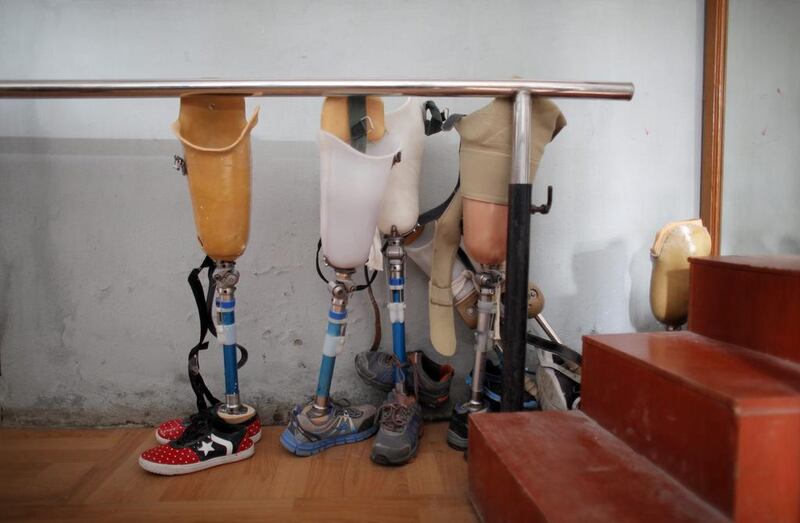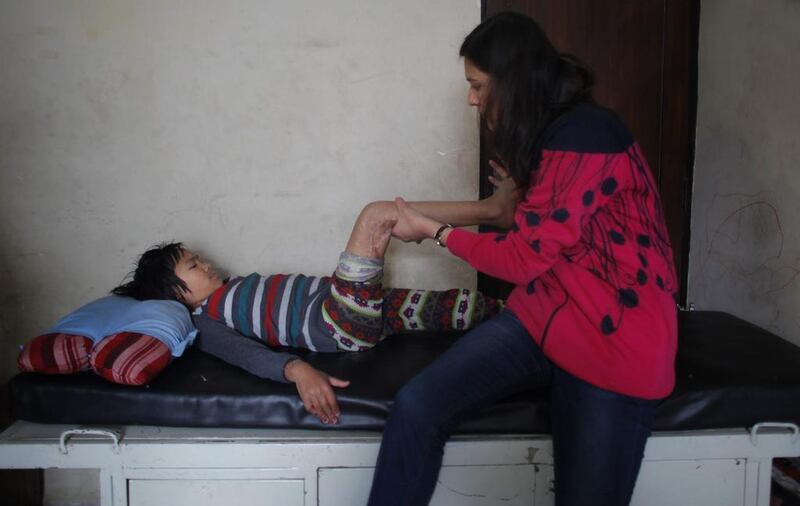When it struck, just before noon on Saturday, April 25, the earthquake in Nepal claimed the lives of an estimated 8,800 people.
The damage to property was equally serious.
Along with World Heritage sites such as the pagodas of Kathmandu’s Durbar Square, tens of thousands of homes were flattened by the force.
Nearer the epicentre of the 7.8-magnitude earthquake, 80 kilometres north-west of the Nepalese capital, entire villages were flattened.
For many survivors the long-term consequences of the disaster were more traumatic.
Out of 22,000 injured, the earthquake has left about 5,000 with physical disabilities that will shape the rest of their lives.
Many of those lost limbs to amputation, either because they were so badly crushed or because it was the only way to free them from the rubble.
In the eight months since the earthquake, the task of rehabilitation centres, like the one shown here in Kathmandu, has been to heal and then help with prosthetic limbs and wheel chairs.
Rebuilding these lives will take a lot longer than reconstruction with bricks and mortar.
